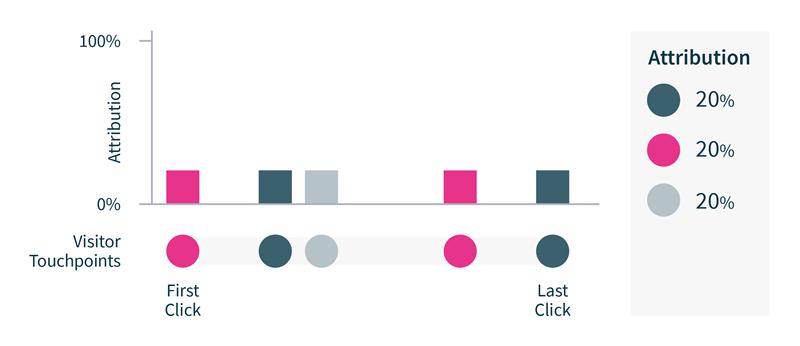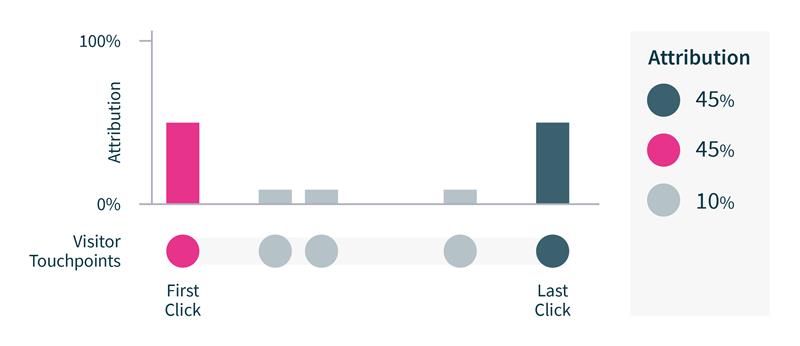Change is the only constant in life, and the same can be said of marketing. With tactics, trends and technology constantly evolving, it’s important that marketers understand how they’re acquiring and converting leads to accurately report attribution.
According to HubSpot, just over half of marketing professionals are currently using attribution reporting, but a top priority is to generate more leads. Marketing attribution software can enhance reporting by accurately tracking when and how your campaigns are driving conversion. This gives you a clearer understanding of which activities are having the most impact on lead generation - and ultimately revenue.
When guesswork no longer cuts the mustard, how can you ensure that you’re accurately attributing your marketing activity and applying insights effectively? In this article, we’ll explain how to use marketing attribution software to enhance your multi-touch attribution reporting.
What is multi-touch marketing attribution?
In modern marketing, a typical lead-generating campaign is likely to be composed of multiple channels and activities. Organic social, paid social, search advertising, landing pages, newsletters… with all of this going on, how do you know which activity led to that all-important conversion? Marketing attribution can help you see the full picture, by implementing a set of rules that will enable you to assign real value to touchpoints in customer journey.
Multi-touch reporting and software takes attribution to the next level, by recognising that each touchpoint in the customer journey has its own value. Instead of simply assigning all value to the last click that drove conversion, it provides deeper insight into the role each touchpoint plays and assigns value accordingly. There are three commonly used multi-channel attribution models: linear, positional and time-decay.

Attributes the conversion equally to each of the touchpoints during the acquisition process. The upside is it tends to be more sophisticated than first and last click models, with adding too much complexity when implementing. The downside is results are often questionable – if a customer visits the same channel twice it will get double the credit – and it fails to identify those superstar moments that convert a lead into a customer.

Attributes the conversion across each of the touchpoints, but upweights toward the first and the last. This is one of the more sophisticated models, in that it recognises the complexity of customer journeys and the resource that goes into acquiring and converting customers. The upside is it’s particularly useful for multi-channel marketing campaigns. The downside is it doesn’t factor in timescales.
Time decay
Attributes the conversion by assuming that the closer a touchpoint is to purchase, the more credit should be given for conversion. This is grounded in the theory that the buyer journey accelerates toward the end, meaning those final touchpoints are the most critical for conversion. This is particularly effective in understanding which tactics lead to the biggest step changes during the buyer journey and monitors the impact of call to action. However, it risks attributing too much value to those touchpoints when the purchase decision was made much earlier in the research phase. This makes it unsuitable for industries or markets that work to longer lead times.
Why do you need marketing attribution?
As you may be starting to understand, marketing attribution is a critical tool for marketers looking to make more data-driven decision-making.
Accurately tracking the customer journey using marketing attribution can provide detail into online and offline interactions. With this information at your fingertips, you can focus your time and marketing budget on doing more activity that drives revenue.
There are several benefits to using marketing attribution:
-
It identifies your most impactful activity by highlighting high-performing channels and keyword, and showing which ones are most effective.
-
It improves your targeting and messaging by showing you what your best customers look like, as well as the keywords or phrases they respond to.
-
It streamlines the process of gathering and analysing data by bringing multiple sources together, helping you map the full customer journey.
-
It can align your wider strategy by showing you how lead generation converts into customers, enabling marketing and sales to work together on activities that are guaranteed to have impact.
Marketing attribution software plays an important role in accurate reporting. It does so by tracking key metrics and determining which sources are driving conversions. Attribution tools such as cookies, tags, or UTM codes collect data that can be fed into reporting to build a detailed picture of the campaigns, channels and keywords that are driving conversions.
How can marketing attribution tools enhance reporting?
Multi-touch attribution reporting is a must-have for the modern marketer. But where should you even begin? Fortunately, there are just three things you need to do to enhance your attribution reporting: collect your data, combine your data sources, visualise your data.
Remember, it’s not just about collecting data. It’s about combining multiple sources and visualising it in a way that enables you to extract real insights. It can be easy to forget that digital marketing activity drives offline conversations as well as online. When a customer picks up the phone and takes the conversation offline, you lose visibility of the touchpoints that drove that action.
Call tracking can assist with covering potential blind spots in your customer journey, by collecting data that can connect your touchpoints with the calls that led to a purchase. Connecting the dots of your incoming calls with the marketing activity gives you the full picture, making budget optimisation and campaign performance more straightforward than ever before.
Even better, Infinity’s suite of tools are designed to integrate seamlessly with a range of partners - including Google, Facebook and HubSpot - letting you analyse data how you want it, when you want it, in the format that suits you best.
Key takeaways
Let’s recap what we’ve learned about multi-touch attribution reporting and how attribution software, such as call tracking, can enhance it:
• Multi-touch attribution gives you a holistic overview of your marketing campaigns, to understand the shape of individual buyer journeys based on real customer data. You can assign value and optimise campaigns using insight.
• Accurate multi-touch attribute reporting can bring a range of benefits such as identifying impactful activities, improving targeting and messaging, streamlining data gathering and analysis, and aligning your wider business strategy.
• Call tracking can assist with creating better multi-touch attribution reporting by connecting the dots between your online and offline activities - as well as offering partner integrations - to give you a more complete picture of the customer journey.
Every conversation matters. Start one with us to discover how call tracking can help you optimise your most valuable customer conversations.